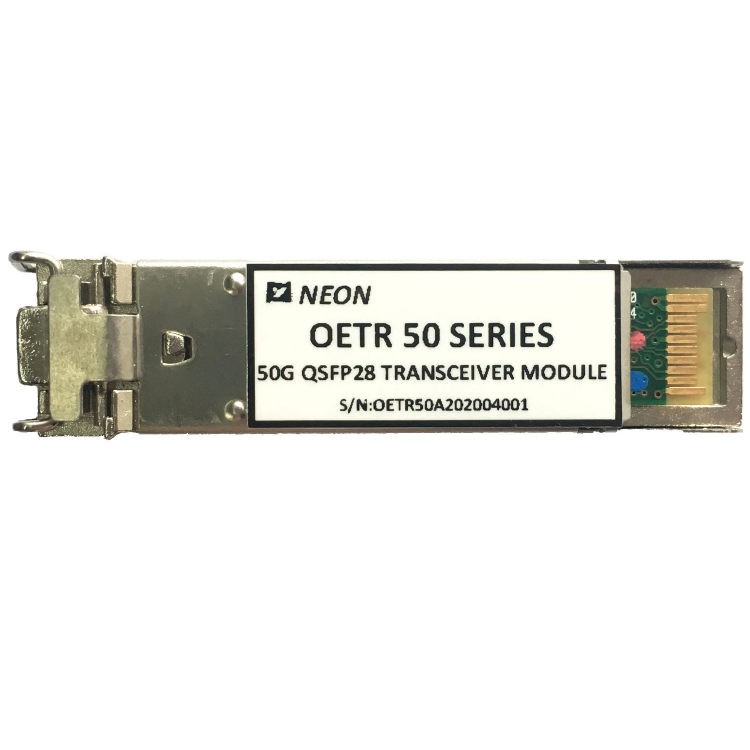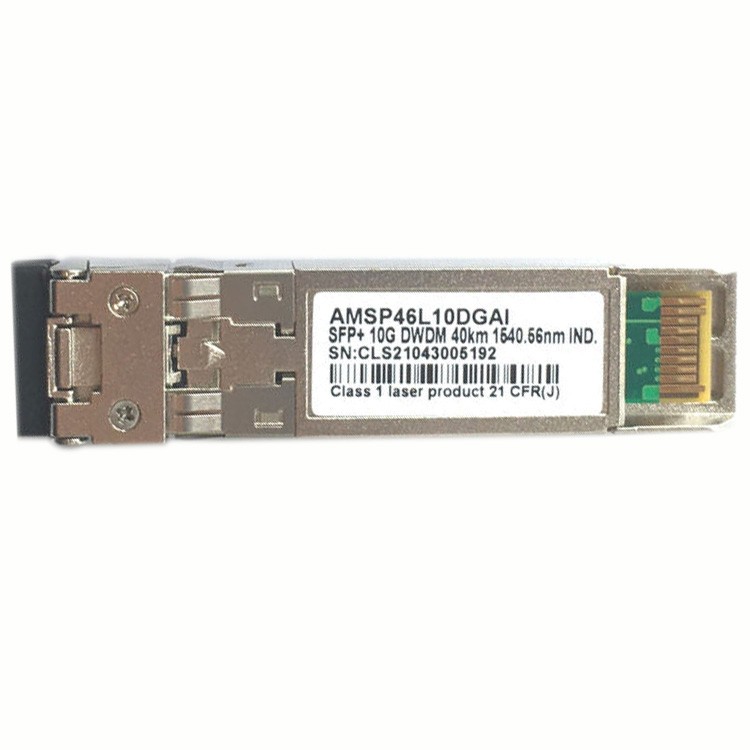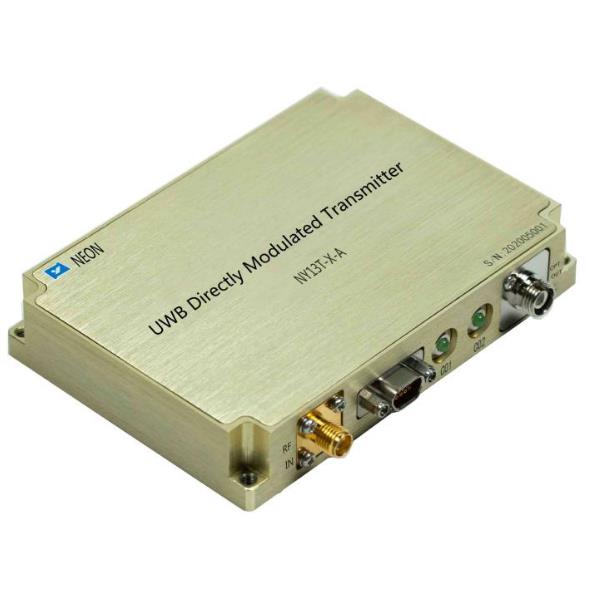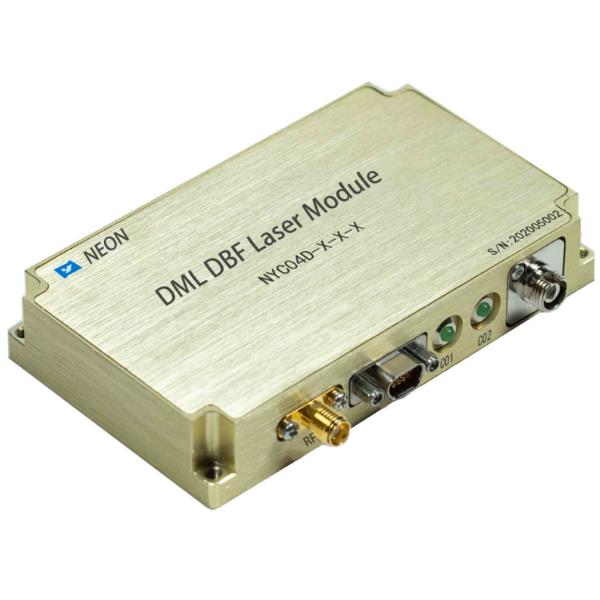Fiber Optic Transceiver vs Media Converter: What’s the Differences?
In constructing or reconstructing enterprise network devices, fiber optic transceivers and media converters are two kinds of optical communication equipment most commonly used. While they also share certain common features, there are significant distinctions between them in interface types, supported transmission protocols, deployment flexibility, and maintenance costs.
To meet the diverse requirements of performance and scalability in different application environments, we will engage in a detailed comparison of fiber optic transceiver vs media converter, to help you build more stable and efficient fiber optic communication systems.
Part 1. What is a Fiber Optic Transceiver?
Fiber optic transceiver is an integrated module optical communications device containing both transmitter and receiver. It is widely applied in networking devices with optical interfaces such as switches, routers, firewalls, and servers.
Its primary function is to convert electrical signals into optical signals for transmission, and the opposite at receiving end, for long-distance and high-speed data transfer. Fiber optic transceivers often come with a hot-pluggable module so that flexibility in configuration can be facilitated based on network needs.
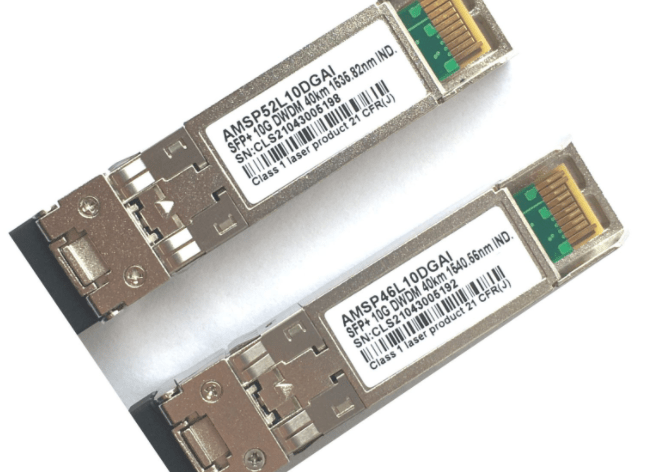
Common Types:
Based on transmission rate and packaging specification, fiber optic transceivers are generally categorized as follows:
SFP Optic Transceiver: 1 Gbps rates supported, ideal for Gigabit Ethernet.
SFP+ Optic Transceiver: 10 Gbps rates supported, widely utilized in enterprise backbone connections and data centers.
XFP Optic Transceiver: Older 10G module gradually being replaced by SFP+.
QSFP/QSFP+ Optic Transceiver: 40 Gbps or higher supported, ideal for high-density interconnect applications.
QSFP28 Optic Transceiver: Used on 100G high-speed connections, commonly used in cloud computing and large IDC scenarios.
Key Technical Specifications:
Modular Design:
Fiber optic transceivers are inserted into host devices via standardized interfaces (e.g., SFP, SFP+, QSFP) without rewiring or replacing the entire device, simplifying deployment and maintenance.
Multi-rate Support:
Supports various transmission rates (e.g., 1G, 10G, 25G, 40G, 100G), meeting different network bandwidth requirements with high compatibility.
Depending on the specific application needs, options are multimode (MM, short reach) or single mode (SM, long reach) modules, from hundreds of meters to tens of kilometers transmission distances.
Large Protocol Support:
Supports a number of protocols such as Ethernet, Fibre Channel, SONET/SDH, to accommodate different network configuration and applications.
Application Examples:
Data Center Interconnection:
Fast optical modules (e.g., SFP+, QSFP) are key components for high-density server rack interconnection and switching application.
Carrier Backbone Networks:
Used in wide area networks and core networks to build high-speed, stable, and scalable connections.
Enterprise Core Networks:
Optical modules can be widely used in large companies to support data transmission and centralized switching among campuses or buildings, enhancing network flexibility and redundancy.
Security Video Surveillance Systems:
Optical modules combined with optical switching devices in long-distance HD image backhaul can effectively improve image transmission quality and stability.
Part 2. What is a Media Converter?
A media converter is a dedicated network device utilized to translate signals between different physical media. Its most common use is to convert electrical signals on copper wire (such as twisted pair wire) to light signals on fiber optic wire, and vice versa.
As a bridge for various transmission media in a network, it makes traditional Ethernet devices easily compatible with fiber optic networks, achieving long-distance and high-speed data transfer.
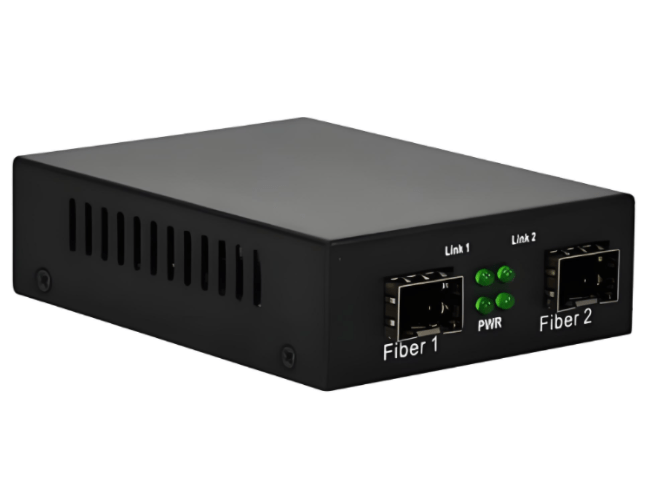
Common Types:
Single-mode and Multimode Media Converters: They support single-mode or multimode fiber interfaces based on the type of fiber depending on the differing transmission distance requirements.
Speed-matching Media Converters: Like from 10/100 Mbps Ethernet to 1 Gbps fiber, or between speeds, enhancing the flexibility of the network.
Single-fiber Bi-directional Media Converters: Facilitate two-way transmission over one strand of fiber, saving fiber resources, and suitable for where availability of fibers is low.
Powered Media Convertors (PoE Media Convertors): Substantiate Ethernet data transport and power feed for devices, simplifying cabling.
Key Technical Specifications:
Media Conversion Function:
Efficient conversion of copper cable electrical signals to optical signals, supporting a number of physical layer network interfaces.
Plug-and-Play Design:
No complicated setup is needed, with support for simple and quick deployment, ideal for rapid network extension or upgrading.
Multiple Speeds and Protocols Supported:
Commonly supports 10/100/1000 Mbps Ethernet and supports standard Ethernet protocols for ensuring network stability.
Extends Network Coverage Distance:
Takes advantage of fiber optics’ long-distance transmission advantage to extend Ethernet signals a few kilometers or even dozens of kilometers.
Low Cost:
Media converters are cheaper capital expenditures than the replacement of an entire set of fiber optic switching equipment, and they offer a high cost-performance means of network upgrading.
Application Examples:
Upgrading Legacy Networks to Fiber:
Legacy Ethernet devices are interfaced with newly built fiber networks through media converters without requiring complete equipment replacement.
Distributed Network Architectures:
In factory floors, buildings, or campuses, media converters facilitate network extension, enabling inter-floor or long-distance connectivity.
Fiber Resource Constrained Environments:
Bi-directional single-fiber media converters save on fiber usage and reduce network-building costs.
Surveillance and Security Systems:
Translate video surveillance camera cable signal to optical signal in order to achieve long-distance, high-definition image transmission.
Part 3. Comparison of Fiber Optic Transceivers and Media Converters
In the case of media converters versus transceivers over fiber, it is essential that they are functionally differentiated, in their application, and in their price. With such differentiation, organizations can make the right decisions depending on their own network requirement.
1. Functional Positioning
Fiber Optic Transceiver: Primarily employed for optical-to-electrical conversion of signals and electrical-to-optical conversion of signals. It is usually integrated as a module in network equipment such as routers and switches, enabling consistent and efficient high-speed optical communication.
Media Converter: Standalone network hardware device that converts signals between one physical medium to another, generally copper cabling to fiber cabling. It serves as a bridge for supporting legacy Ethernet equipment to connect with fiber networks without the use of intermediate hardware.
2. Installation Method
Fiber Optic Transceiver: A hot-swappable module that plugs directly into the optical ports on network appliances, with no additional cabling required and less space used.
Media Converter: An out-of-box device connected by Ethernet cables to network equipment, and fiber cables to remote devices. It is convenient for installation but consumes additional space, perfect for network extension.
3. Deployment Flexibility
Fiber Optic Transceiver: Installation depends on the availability and support of optical ports by the host device, and therefore perfect for environments where devices inherently have optical interfaces.
Media Converter: Irrespective of the host device, it can be conveniently installed between different gear, supporting mixed cabling and different upgrade needs with more flexibility.
4. Transmission Distance
Fiber Optic Transceiver: Supports a wide range of optical modules from tens of meters (multimode fiber) to tens of kilometers (single-mode fiber) that support different scenarios.
Media Converter: Relies on fiber optic links and also supports long-distance transmissions, perfect for network extension.
5. Supported Speeds
Fiber Optic Transceiver: Compliant with multiple high speeds such as 1G, 10G, 40G, and 100G, supporting the demands of high-bandwidth core networks.
Media Converter: Primarily compliant with Ethernet speeds of 10/100/1000 Mbps, appropriate for edge networks and legacy network upgrades.

6. Protocol Compatibility
Fiber Optic Transceiver: Compliant with multiple optical communications protocols such as Ethernet, Fibre Channel, and SONET/SDH, supporting different network architectures.
Media Converter: Mainly serves the everyday Ethernet protocols with a rather monolithic protocol layer, which is specific to Ethernet environments.
7. Operation and Maintenance
Fiber Optic Transceiver: Hosted by the host device’s centralized platform for simplicity of monitoring status, troubleshooting, and maintenance.
Media Converter: Usually plug-and-play with little management but typically without centralized monitoring features, thereby resulting in more scattered maintenance.
8. Cost Investment
Fiber Optic Transceiver: Higher unit price, suitable for core networks demanding high performance and density, with overall higher investment.
Media Converter: Lower cost, ideal for edge or transitional network upgrades, and higher cost-effectiveness.
9. Common Application Scenarios
Fiber Optic Transceiver: Core data center switch ports, carrier backbone networks, and high-speed server connections.
Media Converter: Enterprise building network upgrades, physical media conversion, long-distance network expansions, and surveillance systems.
| Comparison Dimension | Fiber Optic Transceiver | Media Converter |
| Functional Position | Handles electrical and optical signals; embedded in network device modules | Handles copper-to-fiber or fiber-to-copper signals as an independent device |
| Installation Method | Hot-pluggable module plugged into device optical ports | Stand-alone device installed via Ethernet and fiber cables |
| Deployment Flexibility | Host device optical port support dependent, subject to devices with embedded optical interfaces | Independent device with flexible deployment and mixed cabling support |
| Transmission Distance | Supports modules ranging from tens of meters to tens of kilometers | Uses fiber for long distance; has wide range |
| Supported Speeds | Supports 1G, 10G, 40G, 100G and other higher speeds | Primarily 10/100/1000 Mbps Ethernet speeds |
| Protocol Compatibility | Supports multiple protocols (Ethernet, Fibre Channel, SONET/SDH) | Primarily standard Ethernet protocols; simpler protocol layer |
| Operation & Maintenance | Managed through host device platform for centralized monitoring | Plug-and-play with simple management; minimal centralized monitoring |
| Cost Investment | Higher unit cost, optimized for high-performance core networks | Lower cost, optimized for edge networks or upgrades |
| Common Use Cases | Core switching in data centers, carrier backbone, high-speed server interconnects | Network building upgrades, media conversion, long-distance extension, surveillance |
Part 4. When to Use a Fiber Optic Transceiver vs. a Media Converter
Whether to employ a fiber optic transceiver or a media converter depends on your network architecture, performance requirements, and cost. Understanding when to use each can avoid selection errors that lead to poor performance and excessive costs.
When to Use a Fiber Optic Transceiver
Fiber optic transceivers are a crucial component of building or upgrading large-scale network infrastructures, such as data centers, cloud computing systems, and carrier backbone networks.
Transceivers offer high speed, long distance, hot-swappable feature, and easy replacement, making them the ideal choice for professional installations of networks.
Best applied to:
- Network engineers operating high-performance networks
- Data center administrators needing scalable and high-speed links
- Enterprise customers needing fast, stable, and future-proof links
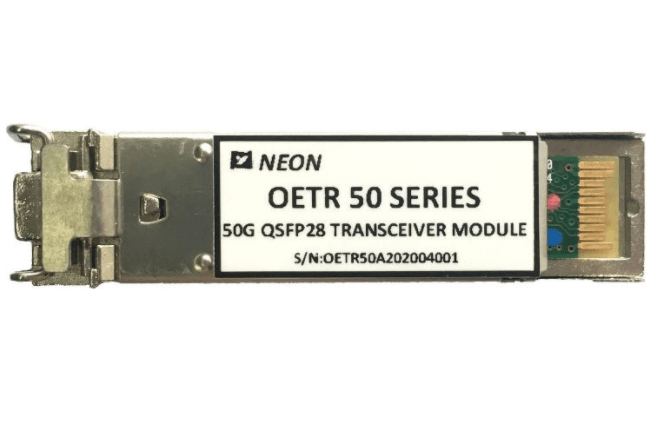
When to Use a Media Converter
Media converters are ideal when there is a need to upgrade an existing Ethernet network to fiber without the necessity to replace old devices. They offer a cheap and quick installation option for increasing transmission distance and adding bandwidth, ideal for cabling between floors, office spaces, and server rooms.
Best applied to:
- Small to medium business (SMB) network managers
- Office or building network upgrade projects
- Users who have little budget but need to expand network coverage in an efficient manner
Final Thoughts
In fiber deployment of fiber optic networks, deploying either a high-speed data center backplane or a cost-optimized network extension, it is important to understand the difference between media converters and fiber optic transceivers. Utilizing the right device for your application scenario can guarantee improved network performance, reduce failure rates, and optimize return on investment.
If you are on the hunt for high-performance and highly compatible optic transceiver products, NEON has plenty of them in store. Its transceivers can be used to support various data rates and transmission lengths and can be used with a variety of networking devices as well as application scenarios.
FAQs about Optic Transceiver and Media Converter
1. What is the difference between an SFP switch and a media converter?
An SFP switch has multiple SFP ports and can switch data between two devices intelligently. A media converter only converts signals from copper to fiber —no switching, just point-to-point conversion.
2. What is the difference between a media converter and PON?
A media converter is a simple device that makes a copper signal-to-fiber conversion. PON is an end-to-end network topology that uses optical splitters to serve many users off a single fiber strand—more complex and scalable.
3. What is the difference between a transceiver and an SFP?
Transceiver is a generic description of any device that sends and receives data. An SFP is a specific type of small transceiver used in network devices.
4. Is an ONT just a media converter?
No. An ONT converts Ethernet to optical like a media converter, but it also handles network protocol, routing, and user authentication, classifying it as a smart device, not a passive device.



